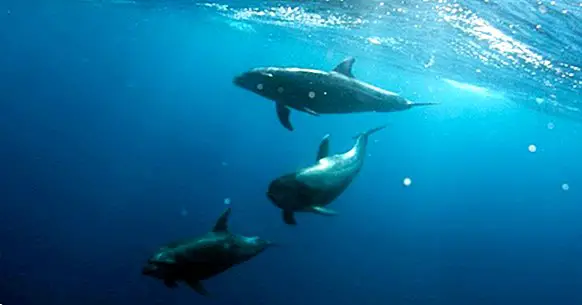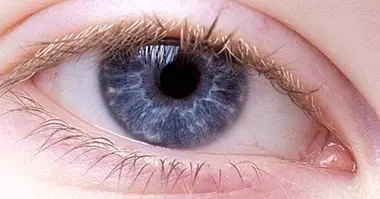Dolphin Assisted Therapy: acoustic waves that heal
The dolphin is a peculiar animal characterized by its intelligence, its sociability, its character, its creativity and its way of life. But this cetacean is not interesting simply because of its iconic appearance or its ingenuity.
Among all its peculiarities, it stands out the transmission of acoustic waves (sonar), used to "see" what is around it, to communicate ... and, for a while, also to offer therapy. Specifically, something called Dolphin Assisted Therapy .
- Related article: "Therapy with horses: an alternative therapeutic resource"
The sonar of the dolphins
The acoustic waves have been carved by the evolution of the dolphins to allow them to interact with a medium in which the naked eye has access to a very limited amount of information due to the lack of light.
These waves are used by the dolphins to see, since they interpret the echo produced in the objects hit by these waves. But sonar is also essential in communication, and its sound producing apparatus uses frequencies 4.5 times higher than those of the human being and emits 4 times more information per unit of time than we do.
These animals produce at the same time whistles to communicate and clicks to orient themselves, this whole range of sounds is known as echolocation and that is what makes them unique therapists.
The sea therapists
The Florida-based Aquatought Foundation has spent years investigating the consequences of the application of sonar on patients. Its founder, David Cole, offers a scientific explanation to the physiological changes that these waves produce in the human being.
It reveals that the sonar is of such power that it could cause a phenomenon known as cavitation (formation of cavities filled with steam in a moving liquid) these bubbles form in the sea and are very fleeting, but reach temperatures of 5500 ºC, this manages to alter the membrane potential of nerve cell terminals in humans, producing changes in our cells and tissues.
The results of their investigations indicate that the effect of these waves in contact with the human being produces a synchronization of the cerebral hemispheres, (which happen to emit waves of similar frequency and phases) and a neurological response similar to that which occurs in states of anesthesia. That is, there appears a brain activity in which alpha waves predominate, as it happens in states of relaxation. On the other hand, when in a state of concentration the electrical activity produced by the brain is mainly beta waves.
The specificity of this effect and its benefits have led to various attempts to artificially reproduce its therapeutic impact. Musical productions have been developed that attempt to imitate the dolphin's echolocation, and it has also gone a step further by creating a device called cyberfyn, which through virtual reality aims to copy the effect of sonar.
Therapy Assisted with Dolphins
The therapeutic session revolves around the application of sonar in different parts of the body. This is complemented by various activities between the child and the dolphin that improve their relationship and create a bond, such as feeding the dolphin, performing motor exercises or games with rings and balls.
For the application of sonar the patient remains floating in the water (a lifejacket is used and the collaboration of a trained therapist), while the dolphin is applying his sonar to different parts of the body.
Children benefit most from this experience because their brain structures are more plastic and modifiable than those of an adult. Sonar emits electromagnetic sound waves that produce stimulation throughout the central nervous system, connecting neurons that are less active than normal. This effect is crucial in the treatment of autism , one of the disorders to which this therapy has been applied the most.
It has also been used in patients with a chronic and / or terminal disease because it improves immunological activity and causes the release of endorphins, which act on pain and mood.



















